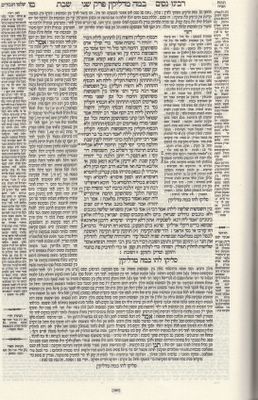
HIDE/SHOW IMAGE
15a
{Shabbat 34b continues}
{the brayta continues}
[but] when the upper [horizon] is pale and the same as the lower, it is night: this is the opinion of Rabbi Yehudah. Rabbi Nechemiah said: For as long as it takes a man to walk half a mil from sunset. Rabbi Yossi said: Twilight is as the twilight of an eye, one entering and the other departing, and it is impossible to determine it.
This {brayta} is self-contradictory.
You stated: "And what is twilight? From sunset as long as the face of the east has a reddish glow." Which implies that if the bottom portion pales and the top portion does not pale, it is night {for the face of the east includes the lower horizon}. Then it is taught, 'When the lower [horizon] is pale {but not the upper,} it is twilight'?
Rabba said: Combine [them] and learn: What is twilight? From sunset as long as the face of the east has a reddish glow, And if the lower [horizon] is pale but not the upper, that too is twilight. But when the upper horizon is pale and the same as the lower, it is night.
And Rav Yosef cited Rav Yehuda who cited Shmuel: This is what he teaches {in the brayta}: From sunset as long as the face of the east has a reddish glow, it is day; if the lower [horizon] is pale but not the upper, it is twilight; when the upper is pale and the same as the lower, it is night.
{Shabbat 35a}
Rabba bar bar Chana cited Rabbi Yochanan: The halacha is like Rabbi Yehuda with respect to Shabbat, and the halacha is like Rabbi Yossi with respect to teruma.
{Shabbat 35b}
that the Kohanim do not eat teruma until twilight is complete.
This that Rabbi Yochanan ruled like Rabbi Yehuda with respect to Shabbat, we do not know according to whom {which Amora's explanation} he rules - if according to Rabba or according to Rav Yosef.
And since it is unclear to use like whom we rule, we conduct ourselves stringently, for it is a matter of prohibition, and doubt of prohibitions, we judge stringently.
And further, since in all the sugyot in all of the Talmud, whenever Rabba and Rav Yosef argue we rule like Rabba, with the exception of {and here we can refer to Bava Batra 104b} Field {when one of the heirs has a field adjoining the field that is to be divided}, Subject {they stay within the subject and thus do not nullify the testator's instructions}, and Half {where a testator expressed the wish that his estate be divided between his wife and his son}.
Therefore, once the sun sets, the day {of Shabbat} is sanctified and is prohibited in performing work.
Rav Yehuda cited Shmuel: When [only] one star [is visible], it is day; when two [appear], it is twilight; three, it is night.
Rabbi Assi {our gemara: Yossi} bar Avin said: When he sees three stars, and not large stars which are visible by day, and not small stars, which are visible at night, but medium sized.
Rava said to his attendant: You, who are not clear in the Rabbinical standards, light the lamp when the sun is at the top of the palm trees. On a cloudy day — In town, observe the chickens; in the field, observe the ravens or arone {a plant}.
{Fowls and ravens retire to roost at night: hence the lamp should be lit before. Arone is a plant whose leaves turn eastward by day and westward by night.}
The Sages learnt {in a brayta}: Six blasts were blown on erev Shabbat/ The first, for people to cease work in the fields; the second, for the city and shops to cease [work]; the third, for the lights to be kindled. And they blew a tekia terua tekia and then rested {for Shabbat has commenced}. These are the words of Rabbi Natan. Rabbi Yehuda HaNasi says: The third is for removing the tefillin. And then there was an interval for as long as it takes to bake a small fish, or to put a loaf in the oven, and they blew a a tekia terua tekia and then rested {for Shabbat had commenced}.
WE HAVE FINISHED {PEREK} BAMEH MADLIKIN



No comments:
Post a Comment